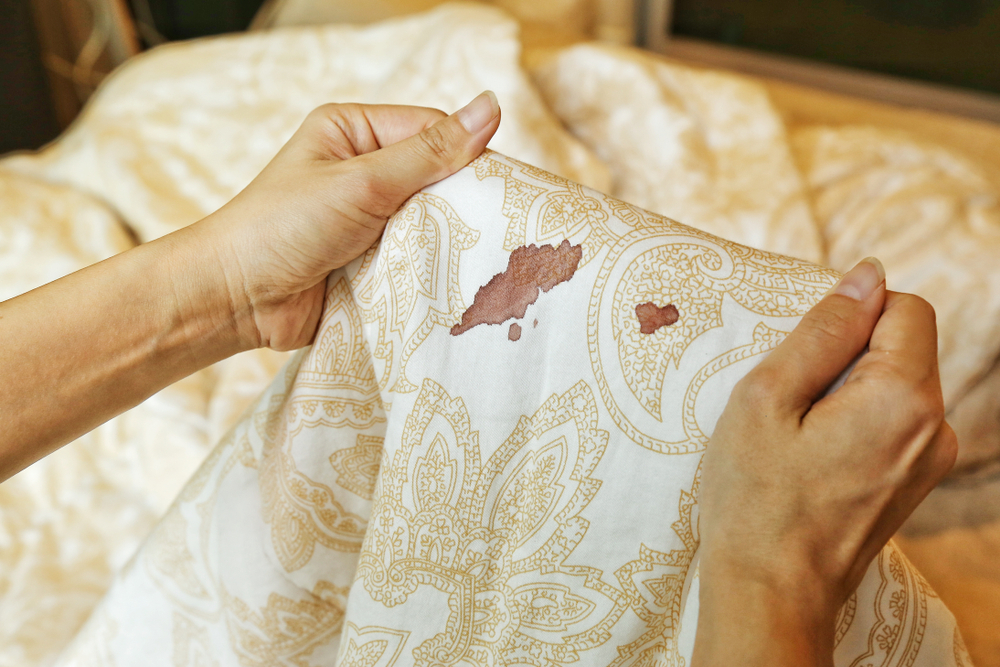Experiencing light bleeding or spotting in the days leading up to your period can be unnerving. While sometimes normal, pre-period spotting can also signal an underlying issue. This blog post finds out the various reasons that cause spotting to occur before your menstrual cycle begins.

We’ll examine harmless explanations like ovulation and cervical irritation, as well as more concerning potential causes like uterine fibroids, infections, or hormonal imbalances that require attention. Understanding the range of possible spotting causes empowers you to determine if it warrants a doctor visit or is just a typical pre-period event.
Contents
- 1 15 Causes of Spotting Before Period
- 1.1 1. Ovulation
- 1.2 2. Hormonal Birth Control
- 1.3 3. Implantation Bleeding
- 1.4 4. Stress
- 1.5 5. Perimenopause
- 1.6 6. Polycystic Ovary Syndrome (PCOS)
- 1.7 7. Thyroid Issues
- 1.8 8. Sexually Transmitted Infections (STIs)
- 1.9 9. Cervical Polyps
- 1.10 10. Endometrial or Cervical Cancer
- 1.11 11. Uterine Fibroids
- 1.12 12. Ectopic Pregnancy
- 1.13 13. Miscarriage
- 1.14 14. Medications
- 1.15 15. Intrauterine Device (IUD)
- 2 Is Spotting Before Period Safe?
- 3 Frequently Asked Questions
15 Causes of Spotting Before Period
Spotting before your period can have various causes, and understanding them can provide insight into what your body may be signaling. Here are 15 common causes of spotting before your period:
1. Ovulation
Spotting can occur during ovulation when the ovary releases an egg, typically around the middle of the menstrual cycle. This is due to a temporary drop in estrogen levels.
2. Hormonal Birth Control
Starting or changing hormonal birth control methods (pills, patches, IUDs, injections) can cause spotting as the body adjusts to new hormone levels.
3. Implantation Bleeding
When a fertilized egg attaches to the lining of the uterus, it can cause light spotting, known as implantation bleeding, often mistaken for a period.
4. Stress
Stress can impact hormonal balance and menstrual cycles, potentially leading to spotting due to fluctuations in stress hormones.
5. Perimenopause
The transition to menopause, or perimenopause, involves hormonal changes that can lead to irregular periods and spotting.
6. Polycystic Ovary Syndrome (PCOS)
PCOS is a hormonal disorder that can cause irregular menstrual cycles, among other symptoms, leading to spotting.

7. Thyroid Issues
Both hyperthyroidism and hypothyroidism can cause menstrual irregularities, including spotting, due to hormonal imbalances.
8. Sexually Transmitted Infections (STIs)
Some STIs, like chlamydia or gonorrhea, can cause inflammation of the cervix, leading to spotting, especially after sexual intercourse.
9. Cervical Polyps
Benign growths on the cervix can cause spotting, often after intercourse or a pelvic exam.
10. Endometrial or Cervical Cancer
Though less common, spotting can be an early sign of cancer in the uterus or cervix, necessitating prompt medical evaluation.
11. Uterine Fibroids
These benign tumors on the uterus can cause irregular bleeding, including spotting between periods.
12. Ectopic Pregnancy
A pregnancy that occurs outside the uterus, usually in a fallopian tube, can cause spotting and requires immediate medical attention.
13. Miscarriage
Spotting can be an early sign of miscarriage, along with other symptoms like cramping and pain.

14. Medications
Certain medications, especially those affecting hormones, can lead to spotting as a side effect.
15. Intrauterine Device (IUD)
Both hormonal and copper IUDs can cause spotting, especially in the first few months after insertion.
Is Spotting Before Period Safe?
Spotting before a period is a common experience for many women and is often considered safe and normal, especially if it occurs occasionally and is not accompanied by other concerning symptoms. Spotting refers to light bleeding that happens outside of your regular periods and can vary in color from pink to red to dark brown.
However, the safety and normalcy of spotting can depend on various factors, including its frequency, volume, and any associated symptoms. Here are several contexts in which spotting before a period is considered safe, along with situations where it may warrant further investigation:
When It’s Typically Safe:
-
Ovulation: Some women experience light spotting during ovulation, which occurs roughly in the middle of the menstrual cycle. This is due to a brief drop in estrogen levels.
-
Hormonal Birth Control: Starting or changing hormonal contraceptives (like pills, patches, or rings) can lead to spotting as your body adjusts to the new hormone levels.
-
Implantation Bleeding: Spotting a week or two before your period could indicate implantation bleeding, which happens when a fertilized egg attaches to the lining of the uterus. This is often seen in early pregnancy.
-
Stress: Significant stress can impact your hormones and potentially lead to spotting.
When to Consult a Healthcare Provider:
While spotting is often safe, certain circumstances require medical attention:

-
Persistent or Heavy Spotting: Regular spotting or spotting that’s more like a light period could indicate an underlying condition.
-
Accompanied by Pain: If spotting is associated with pelvic pain, discomfort during sex, or other unusual symptoms, it could point to conditions like endometriosis or infections.
-
After Menopause: Spotting or bleeding after menopause is not considered normal and should be evaluated by a healthcare provider.
-
If You’re Pregnant: While implantation bleeding is normal, any bleeding during pregnancy should be discussed with your healthcare provider to rule out complications.
-
Changes in Menstrual Cycle: Significant changes in your menstrual cycle or bleeding patterns warrant a discussion with a healthcare professional.
Always listen to your body and respond promptly to any unusual symptoms or concerns relating to spotting before your period. Seeking medical advice ensures early detection and appropriate management, contributing to optimal reproductive health.
Frequently Asked Questions
How does spotting before a period usually appear?
Spotting before a period can be light red or pink in color, sometimes looking brown like old blood. The amount of blood lost during spotting is typically small, less than what is experienced during a light period bleed.
Does spotting indicate pregnancy?
Spotting can be a sign of early pregnancy, known as implantation bleeding. This light bleeding occurs when the embryo implants in the uterine lining, around 10 days after conception.
Why might I see period blood only when I wipe but not on my pad?
Lighter periods can cause blood to appear when wiping before it fully absorbs into a pad. This can lead to seeing blood when wiping without it showing up on the pad immediately.
How much blood is considered spotting?
Spotting is characterized by light bleeding with only a few drops of blood on underwear. It is typically minimal, to the extent that it wouldn’t cover a panty liner. Heavier bleeding that requires a pad or liner indicates regular menstrual bleeding, not spotting.
I am a medical student with experience and interest in Women’s health and well-being.